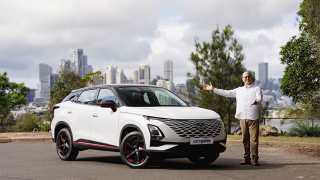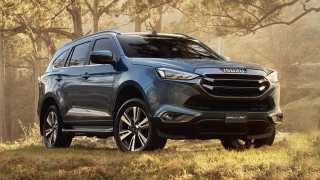
Nissan Leaf hatch 2012 review
- Nissan LEAF
- Nissan Leaf 2012
- Nissan LEAF Reviews
- Nissan Reviews
- Nissan Hatchback Range
- Hatchback
- Nissan
- EV
- Green Cars
- Technology
Meet George Jetson’s new car. It may not fly, but the Nissan Leaf runs entirely on electricity, can automatically charge itself without having to plug in and will send its owner a text message when it’s fully charged.
The 95 per cent production-ready electric vehicle was unveiled at the official opening of the company’s global headquarters in Yokohama.
While bristling with technology, the Leaf looks like any five-door small family hatchback; even less radical than the Toyota Prius hybrid.
The only telling feature of the streamlined hatch is the blank looking front since there is no radiator grille. It doesn’t need one as the electric motor has less cooling requirements than an internal combustion engine.
Nissan Australia senior corporate communications manager Jeffrey Fisher said the Nissan EV would go into production next year and be available in Australia in 2012.
He said the vehicle was 95 per cent production ready, so most of the sleek design and interior computer graphics will be retained in the production version.
Nissan product planning chief Andy Palmer said the Leaf would be “the same price as a similar C segment car” plus the cost of the battery. “We haven’t decided on the final price yet. We will lease the battery but the cost of operating the vehicle will be less than a similar C segment vehicle.
The Leaf is powered by a front-mounted synchronous AC electric motor designed and developed in house and delivering 80kW of power and 280Nm of torque. The 24kWh capacity laminated compact lithium-ion battery pack is housed under the floor so it doesn’t compromise cabin or cargo space. It consists of 48 slimline modules comprising four flat cell batteries, rather than conventional cylindrical batteries for more efficient cooling.
Nissan battery pack design chief Sadao Miki said the lithium-ion batteries developed by Nissan are also lighter, more compact, cheaper, more reliable and have a longer life. The batteries are made in Japan by Automotive Energy Supply Company which is a joint initiative established in 2007 with NEC.
The car has a range of about 160km on the open road without airconditioning and about 20 per cent less in the city. It can be recharged off 240-volt mains in eight hours or 80 per cent charged on special quick charge “pumps” in about 30 minutes.
A small pop-up section of the nose underneath the Nissan badge has two sockets for the mains or quick charge plugs. Three blue lights on the dashboard indicate charging progress with all three lit when full.
The thin battery pack is located under the floor providing a flat interior floor and smooth air-flow under the car, reducing aerodynamic drag.
Nissan EV spokesman Toshimi Abo says the Leaf will be backed by a global data centre that integrates satellite navigation and the internet to ensure the car is always charged and available for use.
This includes a display on the car’s satnav map that shows the maximum range of the vehicle for the current state of battery charge and the location of recharging stations within the range radius.
It also features a timer function which will start the car’s airconditioner or battery charging at a specified time.
The air-conditioner can be programmed to cool or warm the cabin to a set temperature while the vehicle is being charged so that it doesn’t drain the vehicle's battery.
Charging can be set to start at a specified time at night to benefit from cheaper electricity rates and can be programmed and monitored by mobile phone or the internet.
A text message can be sent to the driver when the battery is fully charged and the vehicle is ready for use.
Nissan Motor Company Australia managing director Dan Thompson said they had already held discussions with all levels of government about a range of incentives that would help convince motorists to go electric.
“The states have been the most receptive,” he said. “Three years (before the electric car arrives) seems like a long time, but to get the infrastructure in place it isn’t.
Thompson said they would also talk to companies such as shopping centres, cinema chains, fast food outlets as well as service stations about installing battery charging infrastructure.
“We’ll talk to any business that wants to keep people longer at their business,” he said.
Thompson said they would target fleet sales first, then private buyers.
Driving
On Friday, Journalists were given a one-lap drive around the company’s Yokohama testing ground in an electric Tiida test vehicle which features the same drivetrain platform as the new electric vehicle.
The little hatch was noticeably quieter, smoother and more torquey than the petrol model. While it doesn’t pull as smartly off the line as some hybrids, it has a linear power delivery. Steering feels heavy and the car turns in a little slow thanks to the 150kg extra weight.
However, that weight, which is mostly due to the 300kg battery, is placed low and central, and with a lighter motor than the petrol engine up front, it provides an almost 50-50 weight balance.
There is no engine compression effect, so it doesn’t slow when you take your foot off the accelerator. It therefore requires extra braking coming into corners, an issue with which drivers will have to become familiar.
$10,950 - $16,990
Based on 5 car listings in the last 6 months
$10,950 - $16,990
Based on 5 car listings in the last 6 months

















